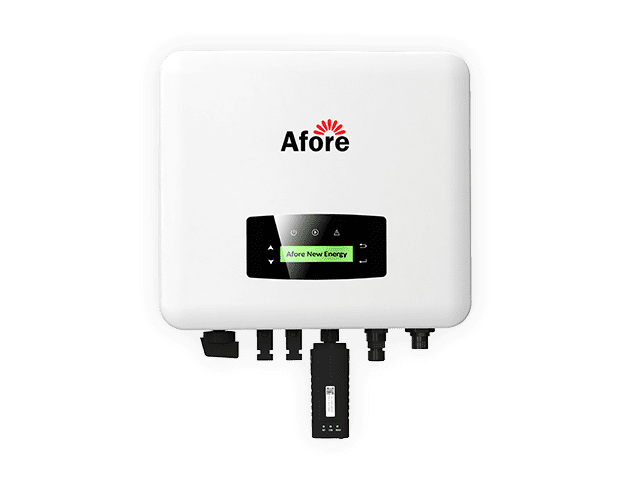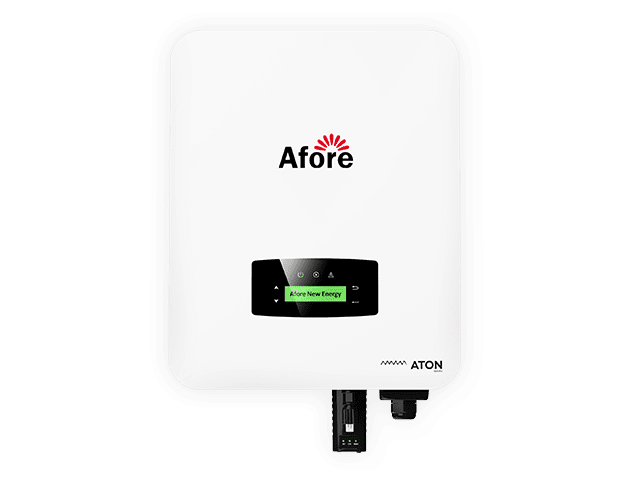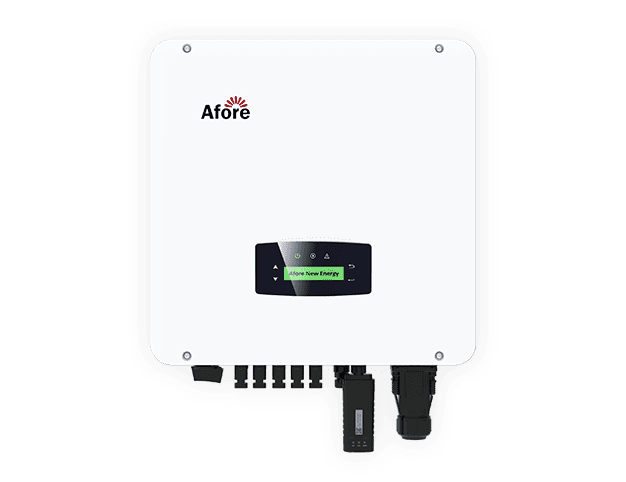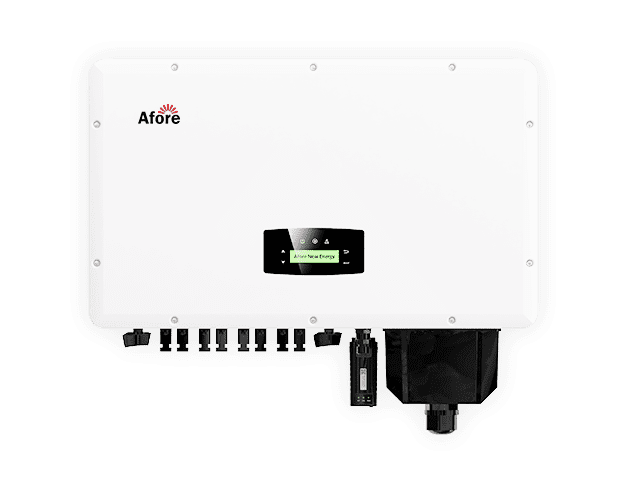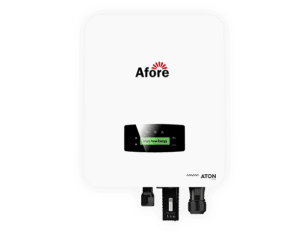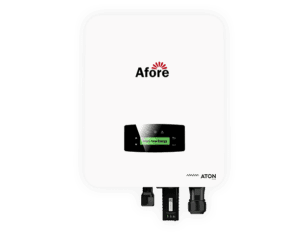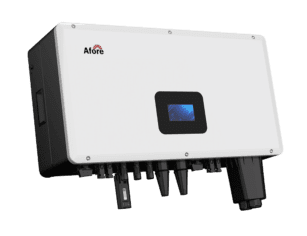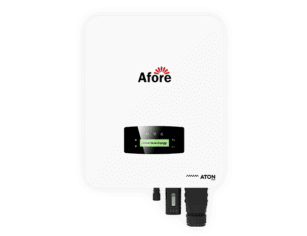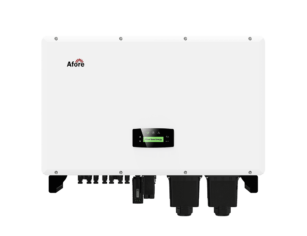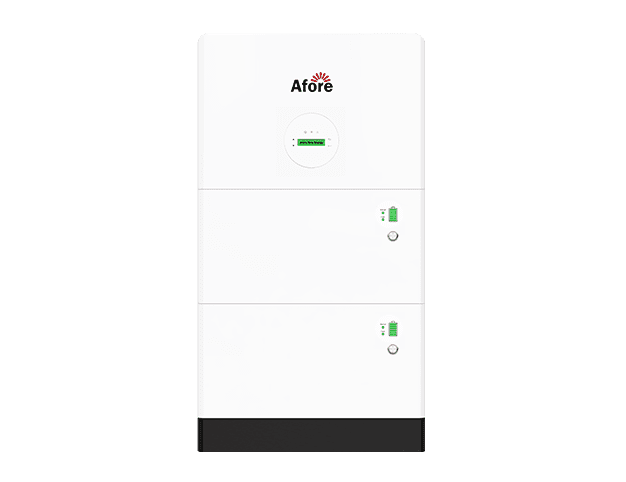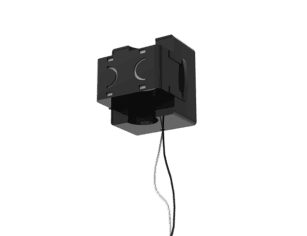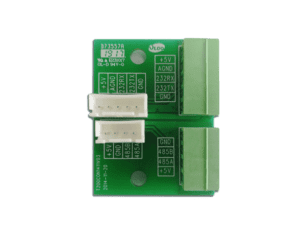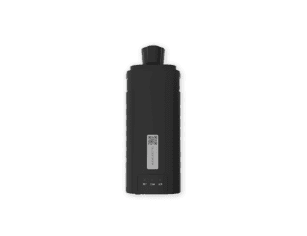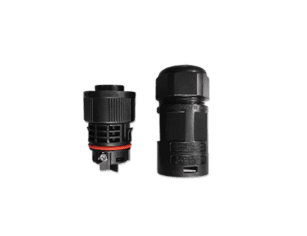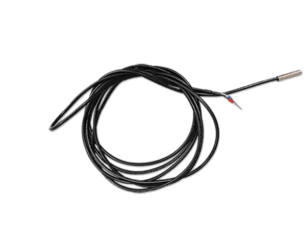Mastering Solar Inverter Voltage for Maximum Efficiency

Índice
When it comes to setting up a solar power system, one of the most critical aspects that often gets overlooked is the solar inverter voltage. The voltage of a solar inverter not only affects the efficiency of your system but also ensures that your solar panels and batteries work seamlessly together. In simple terms, a solar inverter is the heart of any solar power setup. It converts the direct current (DC) generated by your solar panels into alternating current (AC), which is what most household appliances use.
Understanding the inversor solar voltage is crucial because mismatched voltage can lead to inefficient energy conversion, excessive wear on your batteries, and even system failure. Whether you’re planning a small residential setup or a large commercial installation, choosing the right voltage can save you both money and headaches.
Importance of Understanding Inverter Voltage
Grasping the importance of solar inverter voltage is essential for anyone planning to install or maintain a solar power system. Voltage is not just a technical specification—it’s the foundation of how efficiently your solar inverter and overall system will perform. Think of it as the heartbeat of your solar setup. If the voltage isn’t properly matched or balanced, the system won’t operate smoothly, no matter how high-quality your panels or batteries are.
When the solar inverter voltage is correctly aligned with the solar panel array and battery bank, energy conversion becomes far more efficient. The inverter can seamlessly transform the direct current (DC) from your panels into the alternating current (AC) used in homes and businesses without unnecessary losses. However, if the voltage is too low, the inverter may struggle to start or operate under load, leading to poor energy output. Conversely, if the voltage is too high, it can trigger protective shutdowns or even damage sensitive components within the system.
Understanding inverter voltage also affects safety and long-term reliability. A well-balanced voltage range reduces heat buildup, prevents overcurrent stress, and extends the lifespan of your inverter and wiring. It ensures that every part of the solar system—panels, batteries, and loads—works in harmony. This level of control and precision allows homeowners and professionals alike to optimize performance, improve energy yield, and minimize costly maintenance.
In short, mastering solar inverter voltage isn’t just about technical know-how—it’s about ensuring that every watt of sunlight you capture is converted efficiently, safely, and sustainably into usable power.
Types of Solar Inverters by Voltage
Different solar power systems operate under varying electrical demands, and these demands are largely defined by voltage. Understanding the main types of solar inverters by voltage helps ensure your system is designed for both performance and safety. The right voltage level impacts efficiency, wiring size, heat generation, and the inverter’s ability to handle energy flow from your solar panels. Whether you’re building a small off-grid setup or a large on-grid installation, selecting the correct voltage range is critical to achieving consistent energy output and extending system life.
Low Voltage vs High Voltage Solar Inverters
The most common classifications in solar inverter voltage are low voltage and high voltage systems.
- Low voltage inverters—typically operating at 12V or 24V—are often used in smaller setups such as residential or portable solar applications. They are easy to install and safer to handle because of their lower electric potential. However, they require thicker cables to handle higher current flow, which can lead to energy loss through heat and increased installation costs over long cable runs.
- High voltage inverters, on the other hand, generally work at 48V and above. These systems are more efficient because they carry lower current for the same power output, which means less energy lost through resistance. They’re better suited for larger solar arrays and hybrid systems that include battery storage. Higher voltage also allows for longer cable runs without significant efficiency loss.
Choosing between low and high voltage depends on your system’s scale, the total power requirement, and how far your panels are from the inverter. For compact residential systems, low voltage may suffice. But for larger or grid-tied systems, high voltage is often the more practical and efficient choice.
Hybrid Inverters and Their Voltage Specifications
Hybrid inverters are a modern evolution of traditional solar inverters, designed to manage both solar energy and battery storage simultaneously. The solar inverter voltage in a hybrid system determines how well it integrates with batteries and how efficiently it can store and deliver power.
Low-voltage hybrid inverters typically operate at 24V or 48V and are popular for smaller systems where battery storage capacity is modest. They provide flexibility in managing off-grid or backup power needs. High-voltage hybrids, by contrast, can reach voltage levels of 300V or more, ideal for larger installations that require robust energy management and faster battery charging.
The inverter’s voltage rating directly influences how much energy can flow between panels, batteries, and the grid. Choosing the correct voltage ensures the hybrid system operates smoothly—charging batteries efficiently during the day and discharging them safely when needed. A mismatch in voltage between components can lead to inefficiencies or premature wear, so proper configuration is key.
Single-phase vs Three-phase Voltage Considerations
When designing a solar power system, it’s important to understand whether you need a single-phase or three-phase inverter, as this choice affects voltage compatibility and energy distribution.
Single-phase inverters are commonly used in residential systems. They operate efficiently at lower voltages—usually between 12V and 48V DC input—converting solar energy into 120V or 240V AC output suitable for home appliances. These systems are simple, cost-effective, and ideal for homes with moderate energy use.
Three-phase inverters, on the other hand, are typically found in commercial or industrial settings where energy demand is higher. They handle much higher solar inverter voltage inputs and distribute power across three alternating currents. This provides smoother energy flow, greater stability under heavy loads, and improved efficiency for large-scale systems.
Selecting between single-phase and three-phase depends on your energy requirements and local electrical infrastructure. For most households, a single-phase setup is sufficient. However, if you operate machinery, pumps, or large appliances requiring balanced, high-capacity power, a three-phase inverter with an appropriate voltage rating ensures maximum performance and reliability.

Choosing the Right Solar Inverter Voltage
Selecting the right solar inverter voltage is one of the most crucial steps in designing a reliable and efficient solar power system. Voltage directly influences how energy moves between your solar panels, batteries, and inverter. Choosing the wrong level can lead to excessive energy loss, overheating, or compatibility issues with other components. Getting it right ensures your system performs optimally, runs safely, and lasts longer.
The decision depends on several factors—your total energy demand, the distance between panels and the inverter, the type of batteries you use, and whether your system is on-grid or off-grid. The goal is to find a voltage range that balances efficiency with practicality. In general, higher voltage systems are more efficient but require more careful design and safety considerations. Lower voltage systems are simpler but less suitable for larger installations.
Understanding how solar inverter voltage works across different setups will help you avoid costly mistakes and optimize your energy production for years to come.
12V vs 24V vs 48V Inverters: Pros and Cons
When choosing your solar inverter voltage, you’ll most often encounter three standard options: 12V, 24V, and 48V. Each serves a specific purpose depending on system size and energy requirements.
12V Inverters
A 12V inverter is common in small-scale or portable systems, such as off-grid cabins, RV setups, or backup power systems. These inverters are straightforward and easy to install, making them accessible for beginners. However, they carry higher current for the same power output, which can lead to increased heat, thicker cables, and greater energy losses. Over long wire runs, these losses become more noticeable, reducing system efficiency.
24V Inverters
The 24V inverter strikes a balance between efficiency and cost. It’s ideal for medium-sized solar systems, typically found in small homes or off-grid installations that require moderate power output. Because the current is halved compared to a 12V system for the same wattage, wire thickness and energy loss are reduced. This makes the setup more efficient and manageable while still maintaining reasonable safety margins.
48V Inverters
For larger installations, 48V inverters are usually the best option. Operating at higher solar inverter voltage significantly reduces current flow, allowing thinner cables, lower resistance, and improved efficiency across long distances. High-voltage systems are ideal for homes or facilities with larger energy needs and extensive solar panel arrays. They also integrate well with energy storage systems, making them popular for hybrid or grid-tied setups. The only trade-off is that higher voltage systems require careful planning, more specialized equipment, and strict adherence to safety standards.
Summary of Pros and Cons
| Voltage | Ideal For | Pros | Contras |
|---|---|---|---|
| 12V | Small setups | Simple, easy to install | Higher current, more losses |
| 24V | Medium systems | Balanced efficiency and cost | Moderate complexity |
| 48V | Large systems | High efficiency, less energy loss | Higher setup cost, needs expertise |
Choosing between 12V, 24V, and 48V ultimately comes down to system scale and performance goals. The larger your energy demand, the more sense a higher solar inverter voltage makes.
Determining the Best Voltage for Your System
The best solar inverter voltage for your setup isn’t determined by a single factor—it’s the result of balancing your power requirements, panel configuration, and storage capacity.
To start, calculate your total energy consumption. This includes all appliances, lighting, and equipment you plan to run on solar power. Once you know your wattage needs, you can use the formula:
Amps = Watts ÷ Voltage
This simple equation reveals how different voltages impact current draw. For instance, a 2000W inverter at 12V draws roughly 167 amps, while the same inverter at 48V draws only about 42 amps. Lower current reduces heating in wires and improves overall system stability.
Distance also matters. The longer the cable run between panels and inverter, the more beneficial higher voltage becomes. With high solar inverter voltage, current decreases, meaning less energy loss and fewer issues with voltage drop. For small, compact systems with short wiring, 12V or 24V may still be sufficient.
Battery configuration plays a major role too. If your battery bank is designed for 48V, your inverter must match that voltage. Mixing mismatched voltages can result in poor performance, inefficient charging, or potential equipment damage.
In general, small off-grid systems under 1kW may perform well at 12V, medium systems between 1kW and 3kW operate best at 24V, and anything above 3kW should use 48V or higher. These guidelines ensure you balance energy flow, cost, and safety effectively.
Startup Voltage and Its Significance
Every solar inverter has a minimum voltage threshold known as the startup voltage. This is the point at which the inverter begins operating and converting DC power from your solar panels into AC electricity. If the incoming voltage from your solar array doesn’t reach this level, the inverter remains inactive.
Startup voltage is crucial because it determines how early in the day your system starts producing usable energy. For instance, if your panels only generate 10V in weak sunlight but your inverter’s startup voltage is 13V, it won’t turn on until solar irradiance increases. Choosing an inverter with a suitable startup voltage ensures you capture the maximum energy possible throughout the day.
High-voltage inverters often have higher startup thresholds, which can be beneficial in bright, consistent sunlight but less ideal in areas with frequent cloud cover or partial shading. Conversely, low-voltage inverters usually start up with less sunlight, providing earlier daily operation but sometimes at the cost of overall efficiency.
Startup voltage also safeguards your equipment. It prevents the inverter from running at insufficient voltage levels, which could cause unstable output or even component damage. A properly matched startup voltage ensures your solar inverter operates safely, smoothly, and efficiently.
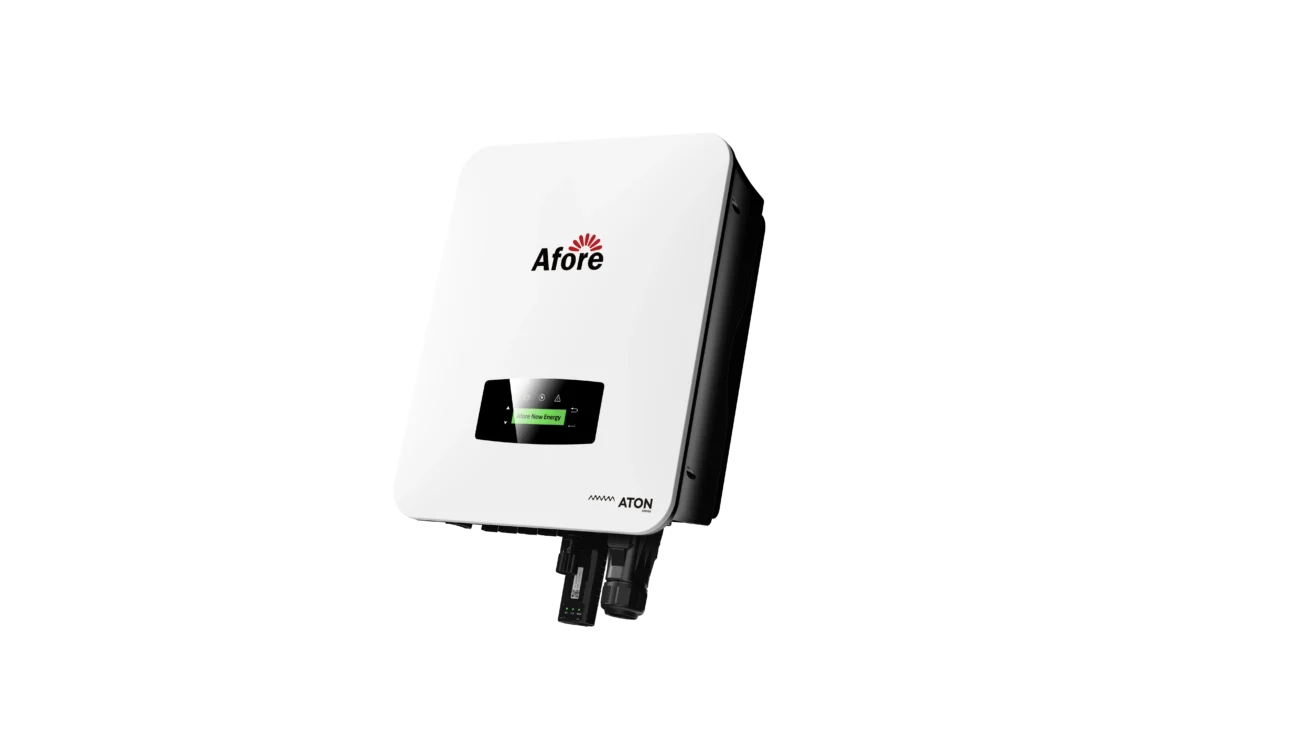
Solar Inverter Amps and Electrical Load
When designing or upgrading a solar power system, understanding the relationship between solar inverter voltage, current (amps), and electrical load is absolutely essential. These three elements determine how efficiently power moves through your system, how safely it operates, and how long your equipment will last.
Every solar inverter converts DC energy from panels into AC energy for use in homes or businesses—but the inverter’s amp draw and voltage capacity dictate how effectively this conversion happens. Too much current can overheat cables and components, while insufficient voltage may prevent the inverter from starting up or running properly.
Balancing amps and voltage ensures steady energy flow and helps avoid energy loss due to resistance in the wiring. Whether you’re powering a small off-grid cabin or a large-scale solar installation, knowing how to calculate and manage your inverter’s electrical load is the key to reliable, long-term performance.
How Many Amps Does a Solar Inverter Draw?
The amount of current—or amps—your solar inverter draws depends primarily on the total power output (in watts) and the system’s input voltage. To determine this, you can use a simple but vital equation:
Amps = Watts ÷ Voltage
This formula shows that for the same power output, increasing voltage reduces the current draw. For example, if your inverter is rated at 2000 watts and operates at 12 volts, it will draw approximately 167 amps. But at 24 volts, it draws only about 83 amps, and at 48 volts, the current drops further to roughly 42 amps.
This inverse relationship between voltage and current highlights why solar inverter voltage plays such a major role in overall system efficiency. Lower current not only reduces heat buildup but also allows the use of thinner cables, which can significantly lower installation costs and minimize resistive energy losses.
However, it’s important to remember that the actual amp draw can fluctuate depending on the inverter’s efficiency, load demand, and environmental conditions such as temperature. Inverters typically consume a small amount of standby power, so even when not running at full load, they still draw a minimal current from the battery or solar array.
Monitoring your inverter’s amp draw helps prevent overloading the system, ensures wiring is properly sized, and maintains voltage stability under different power demands.
Is It Better to Have More Amps or Volts from Solar Panels?
This is one of the most common questions when discussing solar inverter voltage—should you prioritize higher amps or higher volts? The answer depends on the design and scale of your solar system, but in most cases, higher voltage is preferable.
Here’s why: electricity flowing through cables experiences resistance, which converts some energy into heat. The higher the current (amps), the greater the energy lost. By increasing voltage, you can transmit the same amount of power with less current, dramatically reducing these losses. That’s why larger solar installations tend to operate at higher voltages, such as 48V or more.
Higher voltage also enables longer cable runs without significant drops in performance. This is particularly useful for systems where solar panels are installed far from the inverter. With more voltage and less current, cables can be thinner, safer, and more cost-effective.
However, that doesn’t mean higher amps have no value. You still need sufficient current to meet the power demand of your inverter and connected loads. The key is balance—voltage provides efficiency, while current delivers the energy capacity needed to run appliances effectively.
For smaller systems or portable setups, operating at lower voltages (such as 12V or 24V) may be perfectly adequate. But as your system grows, shifting toward higher solar inverter voltage becomes essential to maintain efficiency, reduce heat buildup, and ensure smooth operation under varying power conditions.
Calculating Inverter Amp Draw for System Planning
Planning your solar power system requires accurate calculations of both amps and voltage to ensure every component—from panels to batteries to the inverter—is properly matched. Miscalculations can lead to inefficiency, reduced lifespan of equipment, or even electrical hazards.
To calculate your inverter’s amp draw, start with its rated power output. For example, suppose you have a 3000-watt inverter. Using the formula Amps = Watts ÷ Voltage, you can determine:
- At 12V: 3000 ÷ 12 = 250 amps
- At 24V: 3000 ÷ 24 = 125 amps
- At 48V: 3000 ÷ 48 = 62.5 amps
These figures show why high-voltage systems are more efficient—lower current means less strain on your wires and inverter.
Next, consider peak and continuous loads. Solar inverters handle short bursts of high power (peak loads) differently than sustained consumption (continuous loads). You should size your cables, fuses, and batteries not just for average current draw, but for peak demand as well.
Temperature and cable length also influence amp draw. Heat increases resistance in conductors, while long cable runs can cause voltage drops. To offset these issues, always account for a small efficiency margin when calculating your inverter’s electrical load.
For precise system planning, map out every connection in your solar setup: panel voltage, battery configuration, inverter input range, and expected power demand. Matching these elements ensures your solar inverter voltage remains stable and your system operates efficiently under all conditions.
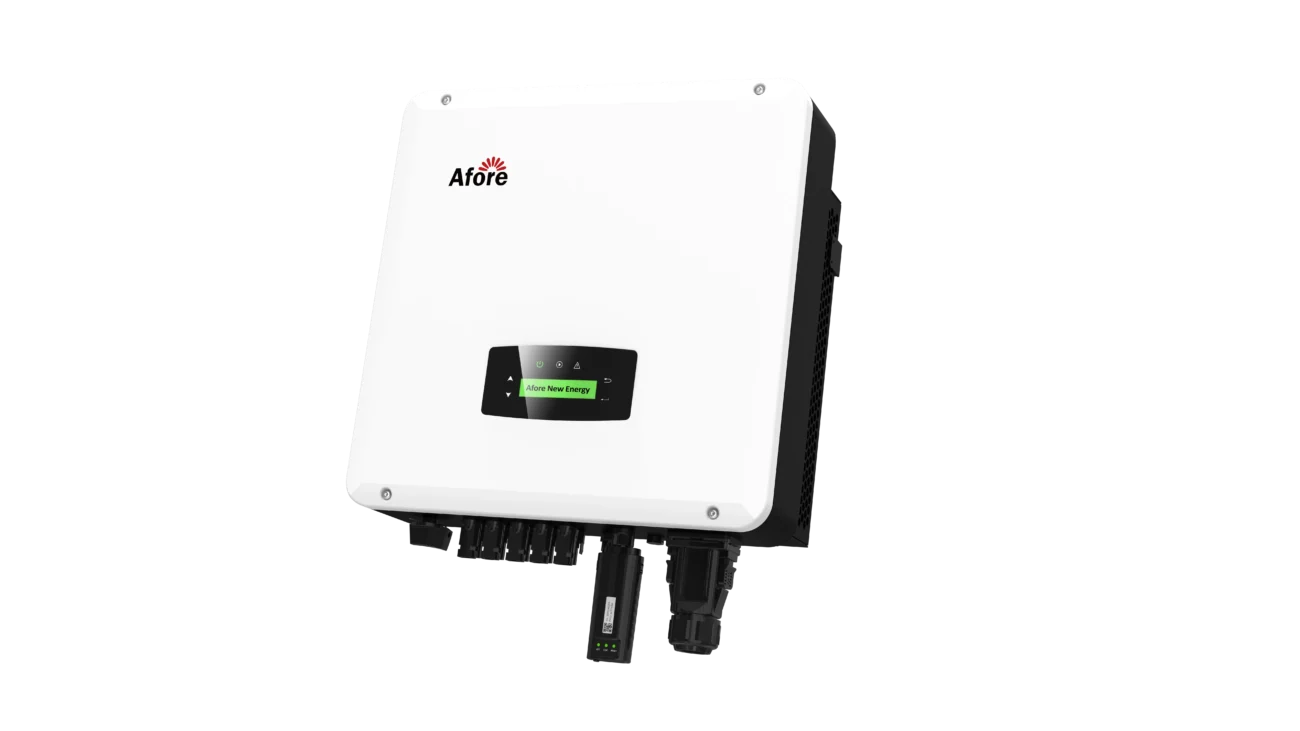
Installation and Troubleshooting Tips
Proper installation and regular maintenance are fundamental to the performance, efficiency, and longevity of any solar power system. Even the most advanced solar inverter voltage configuration can underperform—or worse, fail—if installed incorrectly or left unchecked. Whether you’re setting up a new system or troubleshooting an existing one, paying attention to voltage, wiring, and safety ensures that your solar inverter operates at its full potential.
Understanding Voltage During Installation
The first step to a successful installation is matching the solar inverter voltage to your solar panels and battery bank. Mismatched voltages are one of the most common causes of inverter issues. For example, connecting a 24V inverter to a 12V battery system can result in system failure or permanent equipment damage. Always verify voltage compatibility before making any electrical connections.
Proper cable sizing is equally important. If the cables are too thin for the current flowing through them, resistance increases, causing voltage drops and wasted energy as heat. To prevent this, calculate the expected current using the formula Amps = Watts ÷ Voltage, and then choose cables that can handle slightly more than your calculated current for added safety.
It’s also vital to minimize voltage drop over long distances. For systems where panels are located far from the inverter, consider using higher solar inverter voltage (such as 48V) to reduce current and maintain energy efficiency. Secure all wiring connections tightly, use appropriately rated fuses and breakers, and ensure proper grounding to protect the system from electrical faults.
Before powering up, double-check polarity on every connection. Reversed polarity between solar panels, batteries, or the inverter can cause immediate system failure. Many modern inverters feature built-in protection, but manual verification remains the safest approach.
Common Issues Related to Inverter Voltage
Even with careful setup, solar inverters may encounter issues related to voltage fluctuations or imbalances. Some of the most common problems include:
- Low Voltage Shutdown – This occurs when the input voltage from the solar panels or batteries drops below the inverter’s operating threshold. It’s often caused by undersized cables, insufficient sunlight, or drained batteries.
- Overvoltage Alarms – If the input voltage exceeds the inverter’s rated limit, the inverter automatically shuts down to prevent damage. Overvoltage typically results from misconfigured panel strings or a mismatch in array wiring.
- Startup Voltage Failure – When sunlight is weak, the panels might not generate enough voltage to reach the inverter’s startup requirement. Adjusting panel orientation or increasing the number of panels in a series can help achieve the proper solar inverter voltage.
- Battery Charging Issues – In hybrid systems, incorrect voltage settings can lead to overcharging or undercharging batteries. Ensuring proper charge controller configuration helps maintain consistent performance.
Recognizing these symptoms early allows you to take quick action before the issue escalates into a costly repair.
Solutions and Maintenance Tips
Regular monitoring and preventive maintenance go a long way toward avoiding solar inverter voltage issues. Here are some essential practices:
- Perform Routine Voltage Checks: Use a multimeter to confirm the inverter’s input and output voltages align with system specifications. Fluctuations can indicate loose connections or component wear.
- Inspect Connections and Cables: Over time, cables may loosen due to temperature changes or vibration. Tighten terminals and check for corrosion or insulation damage.
- Clean Solar Panels Regularly: Dust and debris reduce panel output, which can lower the voltage supplied to the inverter. Keeping panels clean ensures consistent energy flow.
- Monitor System Logs: Many inverters include display screens or monitoring interfaces showing voltage and current performance. Review these logs periodically to spot irregularities early.
- Schedule Annual Inspections: Have a qualified technician perform a full voltage and system efficiency test to verify everything is operating safely.
Maintaining balanced solar inverter voltage not only improves performance but also prevents premature wear on both the inverter and batteries.
Safety Considerations for High Voltage Systems
As solar systems grow in size and complexity, high-voltage solar inverters become increasingly common. While these systems offer greater efficiency and lower energy loss, they also demand strict adherence to electrical safety standards.
- Use Proper Insulation: High-voltage lines can arc or cause electric shock if not properly insulated. Always use cables rated for the voltage of your system.
- Ensure Grounding and Bonding: Proper grounding prevents dangerous voltage buildup and protects both equipment and users.
- Install Surge Protection: Lightning or grid surges can cause voltage spikes. Surge arrestors or protective breakers help safeguard your inverter and panels.
- Shut Down Safely Before Maintenance: Always disconnect the inverter and isolate power sources before performing any electrical work.
- Label High-Voltage Areas: Clear labeling warns users and technicians about high-voltage components, ensuring safe handling during inspections or repairs.
By following these safety principles, you can confidently manage high-voltage systems while maximizing performance and ensuring compliance with electrical codes.
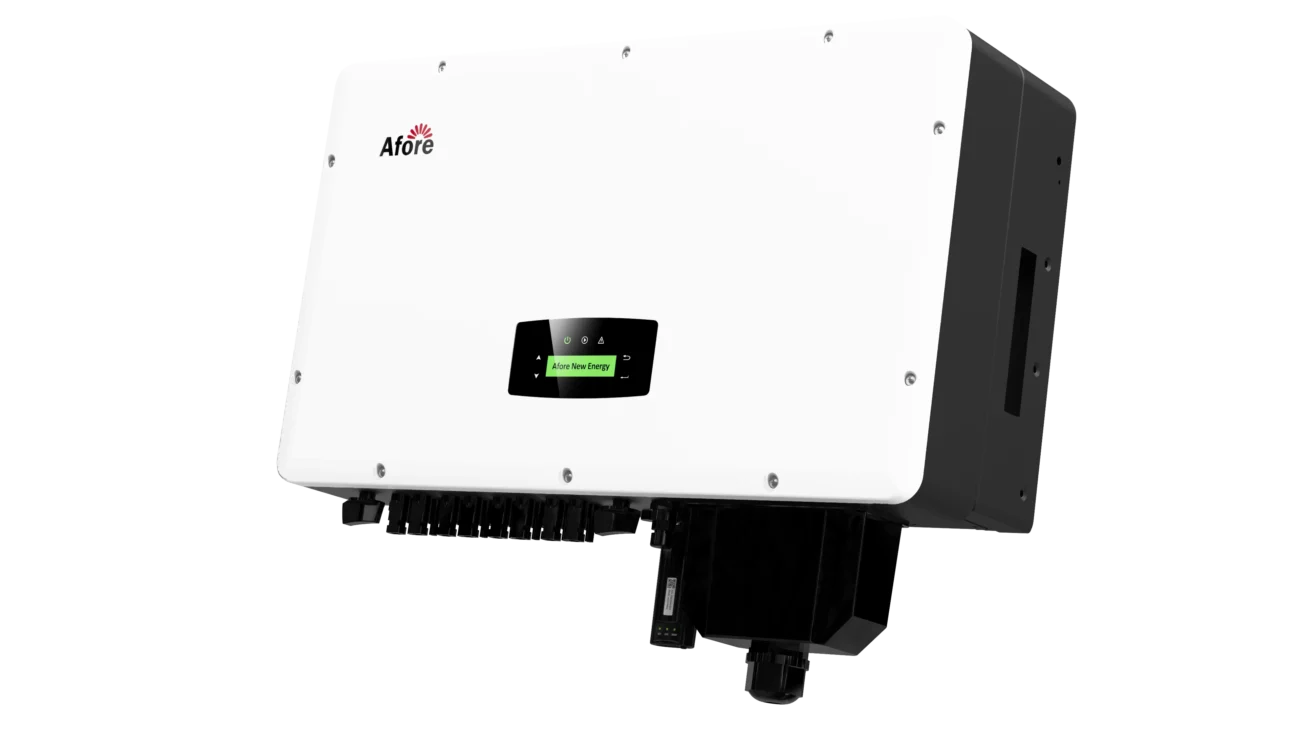
Conclusión
Understanding solar inverter voltage is fundamental to designing a safe, efficient, and durable solar power system. Matching the correct voltage to your solar inverter, solar panels, and batteries ensures maximum energy conversion and minimal losses. By carefully selecting the right voltage and monitoring amps, you can enjoy reliable solar power while safeguarding your investment.

Preguntas frecuentes
-
What voltage is a solar inverter?
A solar inverter typically operates with DC input voltages of 12V, 24V, or 48V, depending on the size of the solar system. These are converted into AC output voltages—usually 110V to 240V—for use in homes and businesses. The exact input voltage range depends on your panel configuration and inverter design. Matching the inverter’s input voltage with your solar array ensures maximum performance and prevents system strain.
-
Which is better, a 24V or 48V inverter?
Both have advantages, but 48V inverters are generally more efficient for medium to large systems. Higher voltage means lower current for the same power level, resulting in less energy loss and thinner cables. However, 24V inverters are more practical for smaller systems that don’t require high power output. The choice depends on system size, distance between components, and total power demand.
-
What is the best voltage for an inverter?
There isn’t a single “best” voltage for all systems—it depends on your setup. For compact or portable systems, 12V or 24V usually works well. For larger residential or commercial systems exceeding 2–3 kW, 48V or higher is ideal. The right solar inverter voltage balances efficiency, safety, and cost based on your power needs and installation design.
-
What is the startup voltage of a solar inverter?
The startup voltage is the minimum voltage required for the inverter to begin operating. For example, a 12V system might need around 13V to start converting power. This threshold ensures the inverter only activates when sufficient voltage is available from the solar panels, preventing unstable operation. Knowing your inverter’s startup voltage helps you size your array correctly to capture energy early in the day.
-
Is it better to have more amps or volts from solar panels?
Generally, higher voltage is better than higher amperage for solar systems. Higher voltage reduces current, which minimizes resistive losses and allows longer cable runs without wasting power as heat. However, having enough current (amps) is still necessary to meet your total wattage requirements. The most efficient systems maintain a healthy balance—higher voltage for efficiency, sufficient current for capacity.
-
How many amps does a 3000W inverter draw on a 12V system?
Using the formula Amps = Watts ÷ Voltage, a 3000W inverter running on 12V draws about 250 amps. Because that’s a large amount of current, it requires very thick cables and short wire runs to prevent voltage drop. This is one reason high-power systems usually operate at 24V or 48V instead.
-
How many amps does a 2000W 12V inverter draw?
A 2000W inverter operating on 12V draws approximately 166.7 amps under full load. The actual current may vary slightly based on inverter efficiency and environmental conditions. Ensuring proper wire sizing and fusing is essential to handle this current safely.
-
How many amps does a solar inverter use?
The current draw of a solar inverter depends on its rated power and voltage input. For instance, a 1000W inverter connected to a 24V system will draw around 41.7 amps. Systems with higher solar inverter voltage draw less current, improving efficiency and reducing heat generation across cables.
-
Can I connect a 24V inverter to a 12V battery system?
No. Connecting mismatched voltages can cause severe damage to your inverter and batteries. A 24V inverter requires a 24V power source to function correctly. Always ensure the inverter voltage, battery voltage, and solar array voltage are properly matched before installation.
-
Do higher voltage inverters improve solar panel efficiency?
Yes. Higher-voltage systems are generally more efficient because they carry less current, meaning less energy is lost as heat through the wires. This improves overall system performance, reduces cable size, and allows for longer distances between panels and inverters without significant power loss. Choosing the right solar inverter voltage can make a measurable difference in long-term energy yield.





